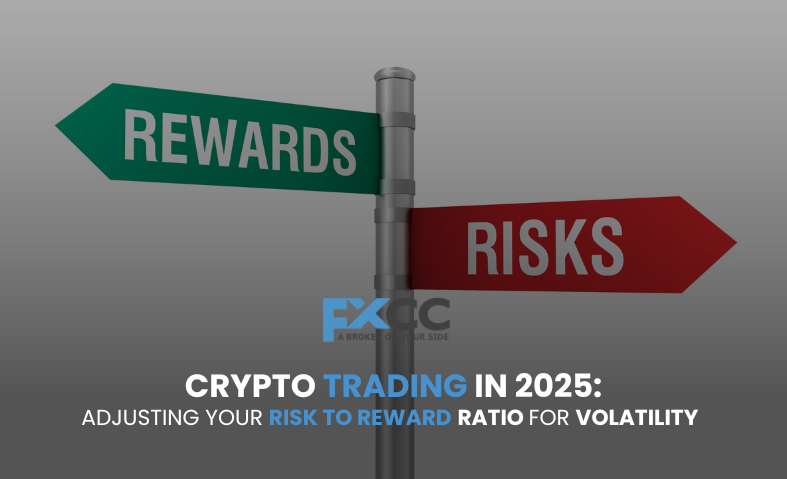The year 2025 finds the cryptocurrency market a more mature, yet still highly reactive, ecosystem. While the initial “wild west” days are behind us, volatility remains a defining characteristic, presenting both immense opportunities and significant risks. For traders looking to navigate this landscape successfully, a critical understanding and constant adjustment of their risk-to-reward (RR) ratio is paramount. This article explores the evolving crypto market in 2025, the forces driving its volatility, and practical strategies for optimizing your RR ratio to thrive in this high-octane environment.

The Evolving Landscape and Persistent Volatility in 2025
The crypto market in 2025 is a blend of maturing infrastructure and rapid technological evolution. We’ve witnessed significant institutional adoption, with regulated exchange-traded products (ETPs) bringing greater liquidity and mainstream participation. This has, however, also increased the market’s sensitivity to global macroeconomic factors like interest rates, inflation, and geopolitical events. Regulatory frameworks are slowly solidifying worldwide, providing some clarity but also potentially impacting specific assets and market segments.
Despite these signs of maturity, crypto volatility persists. Several factors contribute to this:
- Market Sentiment: Crypto markets are notoriously driven by sentiment. News, regulatory announcements, and even social media trends can trigger rapid price swings, often overshadowing fundamental analysis in the short term.
- Macroeconomic Influences: As crypto becomes more integrated with traditional finance, it reacts more strongly to global economic shifts, impacting investor confidence and capital flows.
- Technological Disruptions: While innovation creates opportunities (e.g., advanced DeFi, AI integration), it also introduces uncertainty. New protocols, security vulnerabilities, or unexpected blockchain developments can cause significant fluctuations.
- Liquidity and Market Depth: While major cryptocurrencies boast substantial liquidity, many altcoins remain highly illiquid, making them susceptible to large price movements on relatively small trade volumes.
This unique combination of maturation and persistent volatility necessitates a dynamic approach to trading, with the RR ratio at its core.
Understanding and Optimizing Your Risk-to-Reward Ratio
The risk-to-reward (RR) ratio is a fundamental trading concept comparing potential profit to potential loss. For instance, an RR ratio of 2:1 means you stand to gain twice as much as you risk. In volatile crypto markets, accurately assessing and continually adjusting your RR ratio is crucial for long-term profitability and capital preservation.
A higher RR ratio is generally desirable, as it allows for a lower win rate while still remaining profitable. However, chasing extremely high RR ratios might lead to fewer viable trading opportunities or unrealistic profit targets. Successfully navigating the markets requires striking a balance between your trading approach, how much risk you’re comfortable with, and the current state of the market.
Dynamic Strategies for 2025 Crypto Volatility
Optimizing your RR ratio in the volatile 2025 crypto market requires a flexible and adaptable strategy:
1. Dynamic Position Sizing
Instead of risking a fixed percentage of your portfolio on every trade, consider dynamic position sizing based on current market volatility. In periods of higher volatility, reduce your position size to limit potential losses. Conversely, in calmer markets or when executing high-conviction trades, you might slightly increase your position. Tools that measure Average True Range (ATR) can effectively gauge current volatility and inform your position sizing, directly impacting your potential loss for a given trade.
2. Strategic Stop-Loss Placement
Your stop-loss directly influences your potential loss and, consequently, your RR ratio. For trend-following strategies aiming for larger moves, wider stop-losses might be necessary to avoid being prematurely stopped out by minor market noise. This implies accepting a larger potential loss per trade, demanding a proportionally larger potential gain to maintain a favorable RR. Conversely, for short-term scalping or day trading in highly volatile conditions, tighter stop-losses are essential to limit rapid downside, potentially leading to more frequent, smaller wins or losses. The key is to match your stop-loss width to your trading horizon and the asset’s typical price swings.
3. Flexible Profit Targets
In a rapidly moving market, fixed profit targets can be counterproductive. While a pre-determined target offers discipline, being too rigid can lead to missed opportunities or unnecessary risk. If a trade quickly achieves significant profit, consider taking partial profits or moving your stop-loss to breakeven or into profit to lock in gains. Conversely, if market conditions turn unfavorable before reaching your initial target, it might be prudent to lower your profit target to increase the probability of a successful exit, even if it means a slightly lower RR. This adaptive approach ensures you capitalize on favorable movements and mitigate risks during adverse shifts.
4. Embracing Volatility-Adjusted Tools
Traditional technical indicators may behave differently in highly volatile markets. Incorporate tools that intrinsically account for volatility, such as Bollinger Bands, which expand and contract with market swings, or Keltner Channels. These indicators can help identify realistic price ranges for an asset, guiding more appropriate placement of entry, exit, and stop-loss levels, thereby refining your RR calculations. Understanding the “normal” range of an asset’s movement under current volatility is crucial for setting achievable targets and realistic stop-losses.

5. Diversification and Asset Selection
Diversification remains a cornerstone of risk management. Spreading your capital across different cryptocurrencies with varying risk profiles and use cases can mitigate the impact of extreme volatility in any single asset. Furthermore, during periods of heightened market uncertainty, consider allocating a larger portion of your portfolio to less volatile, high-market-cap assets like Bitcoin or stablecoins. These can act as a temporary hedge, indirectly adjusting your overall portfolio’s risk exposure and contributing to a more favorable aggregate RR.
Crypto trading in 2025 presents both compelling opportunities and significant challenges. The persistent volatility demands a sophisticated and adaptive approach to risk management. By dynamically adjusting your risk-to-reward ratio through informed position sizing, strategic stop-loss placement, flexible profit targets, and the intelligent use of volatility-adjusted tools, traders can significantly enhance their ability to navigate the market’s swings. A disciplined, adaptive, and continuously informed approach to managing your RR ratio will be paramount to achieving consistent profitability and safeguarding your capital in the dynamic world of cryptocurrency in 2025.


